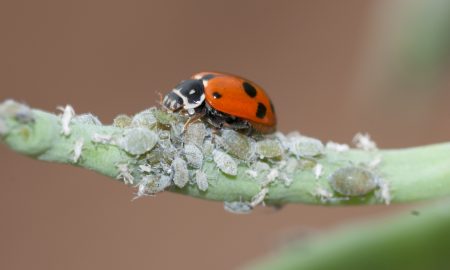Insecticide resistance has been detected in redlegged earth mite populations in the southern cropping region for the first time.
You could say it was only a matter of time!
Redlegged earth mite (RLEM, Halotydeus destructor) has been showing high levels of resistance to insecticides for more than a decade in Western Australia.
Now resistance has been confirmed in multiple RLEM populations from South Australia to both synthetic pyrethroids, including bifenthrin and alpha-cypermethrin, and organophosphates, including omethoate and chlorpyrifos.
The important discovery was made by scientists at cesar and The University of Melbourne after receiving reports of spray failures.
This resistance is likely to spread to other States, including Victoria and New South Wales.
It is therefore important to put management plans in place for RLEM this season, including routine monitoring of emerging crops and pastures.
Growers and advisers are encouraged to remain vigilant; spray paddocks only when mite numbers warrant it, inspect paddocks post-spraying and to report any suspected spray failures.
A RLEM resistance management strategy has recently been developed for New South Wales, South Australia, Tasmania, and Victoria. It is well worth a read!
Predicted egg hatchings in 2017
So when is RLEM likely to hatch in south-eastern cropping regions?
We ran a prediction model to estimate the date of peak egg hatch in five areas in Victoria and southern NSW.
Research led by Dr Garry McDonald suggests that the process of egg development in autumn requires at least 5 mm of rain accumulated over five consecutive days or less, followed by 10 days of average daily temperatures remaining below 16°C.
The rainfall requirements have been met in each location (well and truly!) and with colder conditions having arrived earlier at Hamilton and Ballarat, RLEM are predicted to have been around since mid-April in these areas.
Recent monitoring in paddocks in parts of south-west Victoria confirm substantial mite hatchings have occurred.
Temperatures have been warmer around Albury, Wagga Wagga and Birchip, however with the recent onset of cold weather, hatchings are due now in these locations.
Free testing service
Growers and advisers can access a service to determine if RLEM populations within their paddocks are resistant to insecticides.
This service is being made available through a GRDC-funded project.
Knowing the resistance status will assist in implementing appropriate and effective management.
For more information contact: Dr Paul Umina or Dr James Maino, cesar, (03) 9349 4723
Acknowledgements
Special thanks to Garry McDonald (The University of Melbourne) and Lisa Kirkland (cesar) for their contributions to this article.
Cover image: Photo by Andrew Weeks, Cesar Australia





